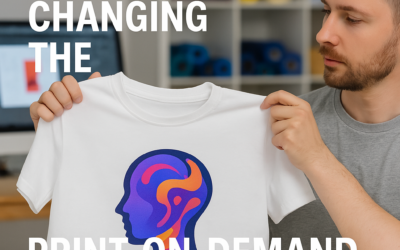The Rise of 3D Printing in Fashion: Customized Jewelry and Apparel
In recent years, the fashion industry has experienced a revolutionary shift, thanks to the breakthrough of 3D printing technology. This innovative method is transforming the way clothing and accessories are designed and produced, and it’s opening the door to endless customization possibilities. For small businesses and designers alike, 3D printing offers a unique opportunity to create customized jewelry, apparel, and more that truly stand out.
What is 3D Printing in Fashion?
3D printing, also known as additive manufacturing, involves creating three-dimensional objects directly from a digital file. In fashion, this technology allows designers to produce detailed and complex products that would be nearly impossible to achieve with traditional methods. Here are three key uses of 3D printing in fashion:
- Rapid Prototyping: Quickly creating samples to test and refine designs.
- Personalization: Allowing customers to customize products to their exact tastes.
- Complex Structures: Bringing intricate patterns and designs to life for a striking visual appeal.
The Personalization Revolution
One of the most exciting advancements of 3D printing in fashion is its ability to deliver personalized products. This technology is making waves, particularly in the jewelry sector, where brands are now able to offer bespoke creations. Companies like Shapeways and Jewelers of America empower customers to design their own jewelry by choosing the materials, shapes, and sizes that reflect their personal style.
Recent statistics add to this trend:
- A report by Statista predicts the global personalized gifts market could reach $31 billion by 2025.
- A survey by McKinsey & Company revealed that 70% of consumers are eager for personalized products.
Brands Leading the Charge
Innovative companies are already tapping into the potential of 3D printing to create cutting-edge fashion. Here are a few inspiring examples:
- Adidas: With their Futurecraft 4D line, Adidas uses 3D printing for midsoles tailored perfectly to the wearer’s foot for enhanced comfort and performance.
- Nicole McLaughlin: This designer blends art with fashion by producing one-of-a-kind pieces through 3D printing, often incorporating sustainable, recycled materials.
- Fashion Tech Lab: Supporting startups focused on 3D printing, this organization is fueling innovation and promoting sustainability within the fashion industry.
Sustainable Fashion and Ethical Considerations
As the fashion sector becomes ever more conscious of its environmental impact, 3D printing is emerging as an eco-friendly alternative. By using only the exact amount of material needed to produce an item, waste is minimized. Additionally, local production is made easier, reducing the carbon footprint associated with shipping items around the world.
Environmentally aware consumers appreciate brands taking steps toward sustainability. For instance, Reebok has embraced 3D printing to manufacture shoes using recycled materials that not only look good but also help protect our planet.
Challenges and Future Opportunities
Despite its many benefits, 3D printing in fashion does come with its own set of challenges:
- Initial Costs: High startup investments in technology can be a hurdle, especially for small businesses.
- Material Options: Although advances are being made, the variety of materials available for 3D printing is still more limited than those used in traditional textiles.
- Consumer Awareness: Many shoppers are still getting familiar with the benefits and possibilities of 3D-printed products.
With ongoing technological improvements and growing consumer interest, the future of 3D printing in fashion looks bright. The promise of mass customization, combined with sustainable production methods and creative designs, positions 3D printing as a cornerstone for the future of fashion.
Conclusion
3D printing is reshaping the future of fashion by enabling the creation of customized jewelry and apparel that is both unique and sustainable. By embracing this technology, small businesses and designers can meet the rising demand for personalization while also contributing to a greener industry. As more brands explore these innovative possibilities, fashion will continue to evolve into a more dynamic, eco-conscious, and customer-centric arena. Now is the perfect time to consider how 3D printing can elevate your business in this exciting market.



